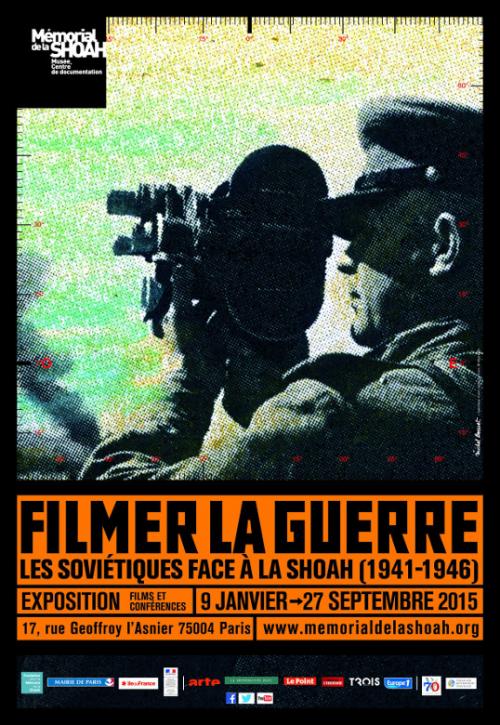Filming the War: the Soviets faced with the Holocaust (1941-1946)

Exhibition
Cycle of films and encounters
From January 9th to September 27th 2015
On the occasion of the 70th anniversary of the end of World War II and of the liberation of the camps by the Allies, EHRI partner, the Shoah Memorial is holding an exceptional exhibition reviewing the Nazi crime scenes data filmed by Soviet operators.
Starting in 1941, in the wake of the Red Army, Soviet camera operators were sent to the front and recorded evidence of the genocide. This cinematographic imagery of the crime was mainly forgotten by the West and was never exploited after the end of World War II. How and for what purpose was this material shot, edited and screened in the Soviet Union during the war? Why, in contradiction with the facts, did the Soviets minimize Jewish specificities compared to the fate of other victims of Nazi violence? What can these mostly unscreened films tell us about the Holocaust?
Hundreds of images
From 1941 to 1945, because of the geographical distribution of military operations, only the Soviets were able to film evidence of the Holocaust, in all of its dimensions: magnitude, systemization and the variety of ways of inflicting death. The exhibition’s hundreds of images reveal the opening of the mass graves and the traces of mass executions in Eastern Europe (Babi Yar, Rostov, Krasnodar, Kertch, etc.), the liberation of the concentration and extermination camps (Klooga, Majdanek, Auschwitz, etc.), as well as the numerous trials and executions following on the Liberation.
"Great Patriotic War"
The photographic material produced by some 400 operators, including the famous Roman Karmen, enabled the Soviet authorities to construct a history of the “Great Patriotic War” for the cinema.
More information on the exhibition and agenda of Filming the War.
Image: Mémorial de la Shoah © D.R.
